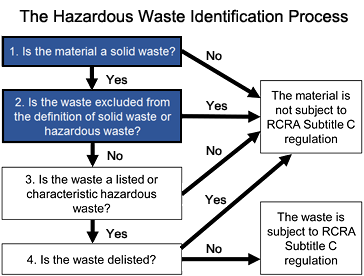The Of Reclaim Waste
The Of Reclaim Waste
Blog Article
Some Ideas on Reclaim Waste You Should Know
Table of ContentsThe Single Strategy To Use For Reclaim WasteReclaim Waste Things To Know Before You BuySome Known Incorrect Statements About Reclaim Waste Reclaim Waste Fundamentals ExplainedSome Known Questions About Reclaim Waste.
Domestic sewage waste refers to the waste and products from a domestic septic tank. The correct administration and disposal of residential sewer waste need liquid waste to be transferred to a sewer treatment plant where the correct approaches and devices are used to detoxify and dispose of waste.
Industrial waste typically consists of possible hazards, such as flammable materials or a combination of liquid and strong waste items, and calls for a more advanced and comprehensive disposal process. The disposal of industrial waste typically involves the purification of waste before transport to make sure secure and correct disposal. Industrial waste is developed from by-products and drainage of commercial processes and manufacturing.
This type of waste can not utilize the same sewage monitoring transport or processes as septic or business fluids. The hazardous waste monitoring process calls for the inspection and screening of fluid waste before it undertakes the disposal process (liquid waste disposal). Drainage waste is the fluid waste that comes from overflow and excess stormwater in extremely populated areas or cities
Drainage waste can cause contamination and flooding if not taken care of correctly. Ensuring proper waste monitoring can avoid catastrophes and decrease ecological harm.
Some Known Questions About Reclaim Waste.
Call PROS Solutions today to find out about our waste monitoring and disposal solutions and the appropriate methods to care for the liquid waste you generate.
(https://packersmovers.activeboard.com/forum.spark#comment-71317007)Do you know what takes place to your water when you disengage, flush the bathroom or drain the washing maker? No? Well, it deserves knowing. This supposed 'wastewater' is not just an important resource but, after therapy, will be released to our land, rivers or the ocean. Used water from toilets, showers, bathrooms, cooking area sinks, laundries and commercial processes is called wastewater.

water made use of to cool down machinery or clean plant and equipment). Stormwater, a form of wastewater, is runoff that moves from agricultural and metropolitan areas such as roofings, parks, yards, roads, courses and rain gutters into stormwater drains pipes, after rain. Stormwater flows neglected straight to local creeks or rivers, at some point reaching the ocean.
Things about Reclaim Waste
In Queensland, most wastewater is treated at sewage treatment plants. Wastewater is transported from domestic or commercial websites through a system of sewers and pump terminals, called sewerage reticulation, to a sewage treatment plant. Regional federal governments develop, preserve and operate most sewer therapy plants. Operators are certified under the Environmental Defense Act 1994 to release cured wastewater at an appropriate environmental standard right into rivers.
The Department of Natural Resources encourages city governments about managing, operating and keeping sewage systems and therapy plants. In unsewered locations, neighborhood governments might require householders to install individual or house sewage therapy systems to treat domestic wastewater from commodes, kitchen areas, bathrooms and washings. The Department of Natural Resources authorises making use of household systems when they you could try these out are verified to be reliable.
In some new class, treatment of some stormwater to remove trash, sand and gravel has actually started making use of gross pollutant traps. Wastewater therapy takes place in four phases: Gets rid of strong issue.
Makes use of tiny living organisms knows as micro-organisms to break down and eliminate continuing to be dissolved wastes and fine bits. Micro-organisms and wastes are incorporated in the sludge.
About Reclaim Waste
Nutrient removal is not available at all sewage therapy plants due to the fact that it requires pricey specialized tools. It is coming to be more usual in Queensland. Clear fluid effluent created after treatment may still include disease-causing micro-organisms. If this effluent is launched right into rivers such as rivers or the sea, the micro-organisms will at some point pass away out.

Many wastewater moves into the sewage system. Under the Act, regional governments carry out authorizations and licences for environmentally appropriate activities (Periods) involving wastewater launches that might have a regional impact.
Unknown Facts About Reclaim Waste
Otherwise, examples are considered laboratory analysis. Often lots of examinations are needed to develop the levels of each of the different contaminants such as oils, hefty metals and pesticides in water. Monitoring provides factual info concerning water quality and can confirm that licence conditions are being satisfied. The details obtained via surveillance provides the basis for making water high quality decisions.
Report this page